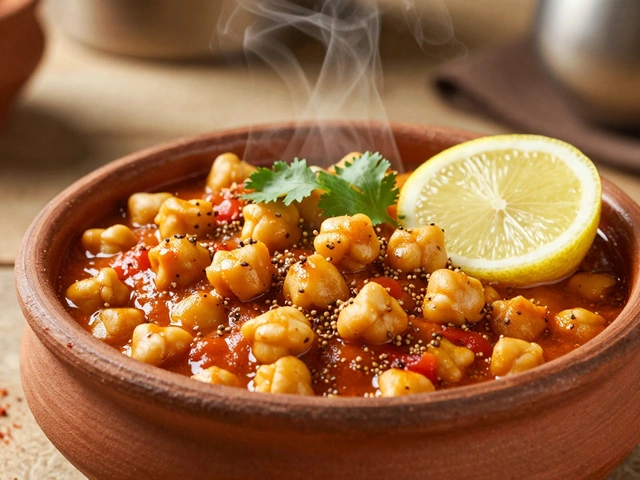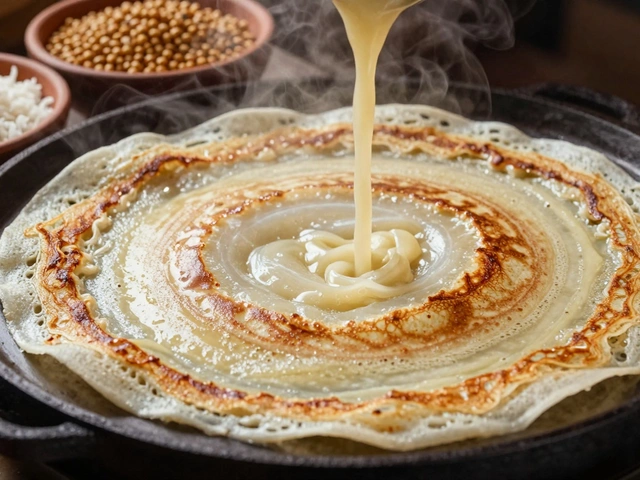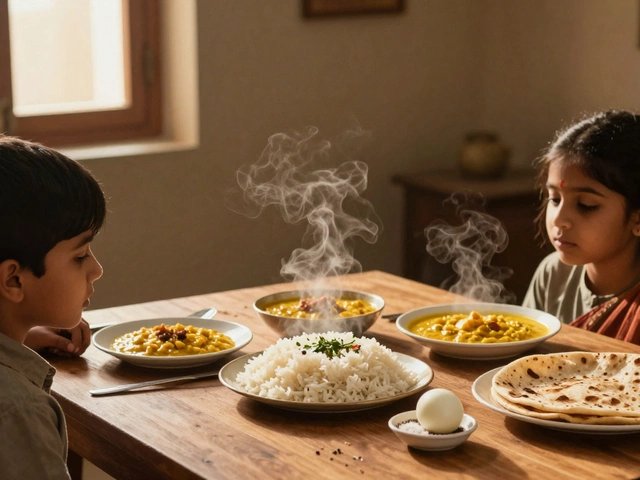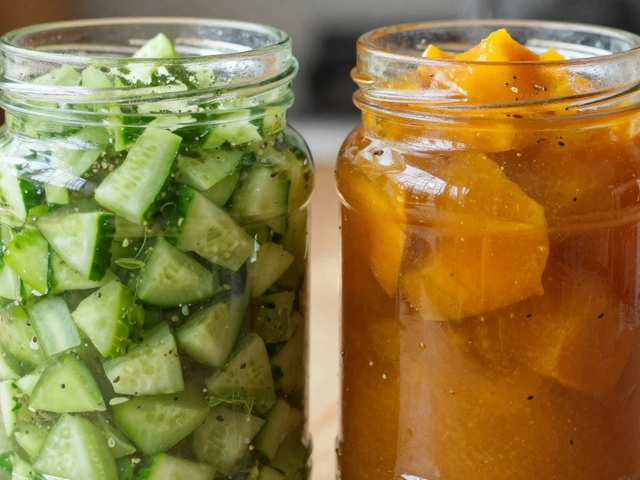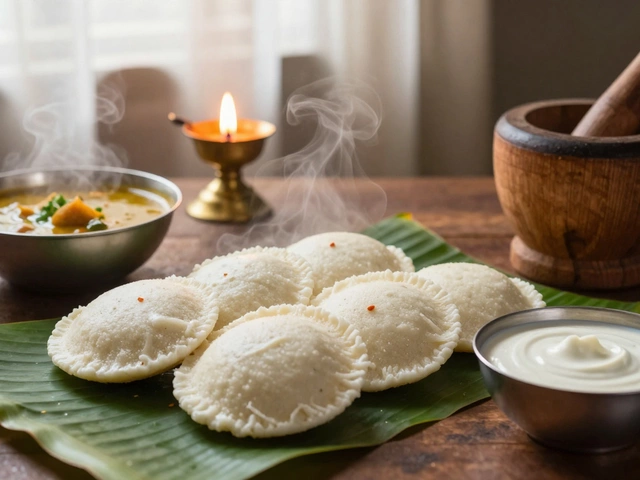Biryani doesn’t play around when it comes to flavor. The moment you crack open a pot of freshly cooked biryani, the mix of spicy aroma and buttery rice hits you right in the face. But why does it taste so different from regular rice dishes? The secret isn’t just about tossing rice and meat together.
So much of biryani’s magic starts with the spices. Unlike plain pilaf or fried rice, biryani gets its punch from layers of flavor—think cinnamon, cardamom, cloves, and just the right kick of chili. Fresh ground spices seriously make a difference here. If you’ve ever bitten into a grain of rice that tastes almost sweet, spicy, nutty, and savory all at once, that’s no accident.
But flavor isn’t only about the spice blend. Even the variety of rice matters. Something as simple as grabbing a bag of good basmati can make or break the recipe. Those long, slender grains soak up everything and stay fluffy. Don’t settle for short grain or generic rice—trust me, you’ll taste the difference right away.
- The Power of Spices
- Rice: More Than Just a Base
- Layering and Cooking Secrets
- Pro Tips for Flavorful Biryani
The Power of Spices
If you’ve ever wondered why biryani smells so tempting from a mile away, you can thank the spice mix. Biryani isn’t shy—this dish uses a lineup of spices that all bring something solid to the table. You’ll find whole spices like cinnamon sticks, star anise, bay leaves, green and black cardamom, cloves, and sometimes even mace, all tossed right into the hot oil. These pack a punch and release their flavors into every grain of rice.
But it doesn’t stop there. Ground spices are the real backbone: turmeric adds color, chili powder brings heat, coriander powder gives depth, and garam masala ties everything together toward the end. The balance here is key. Dumping in too much of one spice is a rookie mistake—biryani is about bold taste that still feels balanced.
- Cinnamon: Sweet and woody, brings warmth to the rice.
- Cardamom: Adds a pop of menthol coolness (especially green cardamom).
- Cloves: Sharp, powerful, and almost peppery—use sparingly.
- Bay leaves: Earthy and a bit floral, perfect for background flavor.
- Turmeric: Classic golden color and light earthy bitterness.
Freshly ground spices always work better than pre-packaged powders. You’ll notice the difference right away—the fragrance is strong and almost instantly makes your kitchen smell like a pro chef’s workspace.
Another key player is saffron. These tiny orange threads cost a lot, but soaking just a pinch in warm milk before drizzling it over the rice gives both color and a subtle floral flavor that’s hard to beat. Some home cooks even skip this step to save money, but if you have saffron around, use it—you’ll get that special restaurant vibe in your own biryani recipe.
Getting the spice mix right is what makes each biryani, from Hyderabad to Kolkata, taste totally different. Each region and even every family has their own secret blend and timing for adding spices. It’s not just following a list; it’s learning what works for your own crowd.
Rice: More Than Just a Base
People often think of rice as just the filler in a biryani, but it’s way more important than that. The quality and type of rice are make-or-break details. For true, stand-out biryani, nothing beats basmati rice. It’s famous for its long grains and signature fragrance—seriously, even Max the dog perks up when it’s cooking in my kitchen.
Here’s why basmati is the go-to: when cooked right, each grain stays separate, fluffy, and soaks up the flavor without turning mushy. That’s exactly what gives biryani its killer texture.
Rinsing the rice well (at least 2-3 times) helps get rid of extra starch. This step is quick but makes all the difference. Some people soak the rice for 20-30 minutes before boiling—it helps the grains stretch even longer when cooked. As for the cooking itself, you want the rice to be about 70% cooked before layering it with the spicy meat or veggies. Overcooked rice will end up a sticky mess once it steams with everything else.
- Always use aged basmati for best aroma and separate grains.
- Boil the rice with a pinch of salt and a couple of spices—like cardamom or bay leaf—for extra oomph.
- Don’t skip tasting the rice while boiling. Stop cooking when it’s almost done, not completely soft.
Check out this quick breakdown on why rice choice matters for biryani:
| Rice Type | Texture After Cooking | Best For |
|---|---|---|
| Aged Basmati | Fluffy, Fragrant, Separate | Traditional Biryani |
| Jasmine | Slightly Sticky | Thai dishes, not ideal for biryani |
| Short Grain | Sticky, Soft | Sushi, desserts |
The way you handle the rice turns a good biryani recipe into a great one. Don’t cut corners here—it's worth it.

Layering and Cooking Secrets
The real magic of a killer biryani comes down to how you layer and cook it. This isn’t a throw-everything-in-the-pot dish. Classic biryani recipes follow a pretty specific pattern for a reason. Each layer brings something special, and the technique influences taste and texture way more than most folks think.
Start with partly-cooked rice—don’t go all the way or you’ll end up with mush. Spread this over your marinated meat or veggies (if you’re doing a veggie version). Next, scatter fried onions, a little fresh mint, and maybe a drizzle of saffron-infused milk for that trademark color and aroma. This gets repeated in layers, not just stuck in a heap. Why? Each layer gives the rice a shot at soaking up different flavors.
The last step is sealing the pot. Most traditional recipes use the "dum" method. That means covering the pot tightly (sometimes with dough for a seal) so the steam cooks the whole thing evenly. All the juices mix right into the rice and meat, locking in flavor and keeping everything juicy. Skipping this? You lose what makes biryani stand out.
- If you’re using store-bought dough, slap it around the edge of your pot for an easy seal.
- No dough? Lay a kitchen towel under the lid before closing it—old-school hack, but it really keeps that steam in.
- Always use a heavy-bottom pan to avoid burning your bottom layer.
- Keep the heat low and slow. Too high and you burn the rice before the flavor has a chance to build.
According to a 2023 survey by the Indian Culinary Forum, around 74% of home cooks found that proper layering and "dum" cooking boosted flavor and texture in their biryani compared to cooking everything together. Small steps make a big difference.
Pro Tips for Flavorful Biryani
If you want your biryani to taste like restaurant-style and not like an average stir-fry, there are some things you just can't skip. First, always marinate the meat. Marinating, even for an hour, makes a world of difference. The yogurt helps tenderize while the spices soak in for a bigger punch. Don’t forget a squeeze of lemon in your marinade—it brightens up all the flavors.
Cooking your rice until it's only about 70% done before layering is another game-changer. Once you stack everything together, the steam will finish the job without turning the rice mushy. Use a heavy-bottomed pot for even cooking and to avoid burning layers at the bottom.
Layering is what separates good biryani from great biryani. Go in with the aromatics: fried onions, fresh coriander, and mint in each layer. For the ultimate aroma, sprinkle a few drops of rose water or saffron milk over your final rice layer. Not a fan of saffron? Turmeric in milk gives a similar color glow, minus the spendy price tag.
Here are some quick do's and don'ts for biryani recipe success:
- Do use whole spices like cardamom and cloves, but fish them out before serving unless you like surprise crunches.
- Don't skip ghee. A little ghee added with oil keeps everything lush and fragrant.
- Do let your finished biryani rest for 10–15 minutes before opening the lid, so the flavors settle.
- Don't over-stir after cooking; it breaks the rice and turns things clumpy.
Curious how home cooks crank up maximum aroma? Some swear by a simple dum (steam cook) with a tight flour-dough seal around the lid. Others use a kitchen towel. Both ways help trap that heady biryani fragrance inside.
| Pro Tip | Why It Works |
|---|---|
| Marinate meat overnight | Deep flavors, tender texture |
| Use aged basmati rice | Longer grains, absorbs aroma and spices best |
| Add fried onions in layers | Sweetness and crunch |
| Let biryani rest before serving | Flavors blend together, rice firms up |
It might sound like a lot, but once you try these steps, every batch of biryani you make can have that wow factor. Max (my dog) might not notice the difference, but your friends definitely will.

